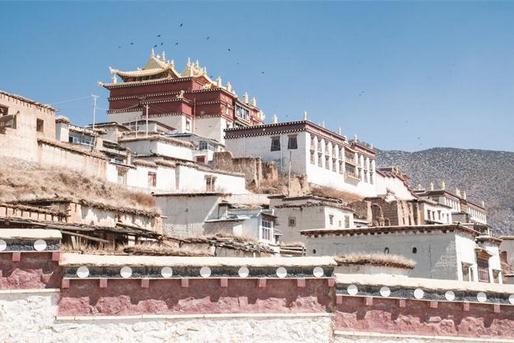Exploring wild and rugged Yunnan
 0 Comment(s)
0 Comment(s) Print
Print E-mail Shanghai Daily, September 18, 2014
E-mail Shanghai Daily, September 18, 2014

From here we went to Shangri-La and Songzanlin Monastery, which is as spectacular as you would expect. The night was spent in bivouacs in Ringha. These sit on a rise behind the home of the owners, Constantine, a French writer, and his British partner, Phoebe. The bivouacs themselves are decorated in what I would call 19th century African explorer style — rugs on the floor, an old shipping trunk as a low table, lighting by silver candlesticks and tea lights, mattresses on the floor with warm quilts.
Normally, our dinner would have been eaten under a canopy on the hill with a bonfire burning but it was a bit too chilly that night. Instead we ate in Constantine and Phoebe's home. A Western, three-course, home-cooked meal eaten in a traditional Tibetan house, where the ceilings, beams and walls are decorated with paintings by the local monks. Constantine and Phoebe's hospitality stretched to breakfast the next morning. Eggs, bacon, juice, yoghurt, fruit, coffee, tea — we could have easily stayed for days. But we had another big drive to get to our last stop, Tiger Leaping Gorge, before returning to Lijiang.
Our hotel at Tiger Leaping Gorge, where a primary tributary of the upper Yangtze River rushes through, was plain. Our rooms had air conditioning and private bathrooms, so that's pretty much all we needed to be happy.
The big plus was the large shady terraces where you could sit and watch day turn to night against the two sheer, barren mountains of grey rock that form the gorge. But don't let the word gorge fool you. If this conjures up green mountains and rushing waters, try thinking of harsh greys and browns. It is not pretty, but it's striking.
The biggest attraction of our trip was, of course, Yunnan itself. Over 4 days we traveled to places that are home to Naxi, Bai and Tibetan people. Yunnan also gives the panorama feature on your phone or camera a good workout. It's an endless parade of magnificent mountains and fertile valleys (the barrenness of Tiger Leaping Gorge being the exception) and wide blue skies.
The other highlight is the food. Everything Kewen ordered was delicious. We told him we wanted to stick to local food and we weren't afraid of spice. We tried everything from yak carpaccio to home cooking in Ringha and soup in the market at Lijiang. In Shaxi, Kewen took us to a home where we sat at the one and only table on a long verandah. We had to wait for the lady of the house to finish her mahjong game before she cooked six dishes for lunch. That evening, Kewen led us down a narrow alley near our hotel into a miniscule little bar. Again, in the last place I would have thought to look, we ate unexpectedly authentic Italian food cooked by a Milanese top chef. In fact, the best pesto I've ever had.
I chose this particular trip because the first day was spent on the bikes and sidecars. It was, as I expected, a highlight of the trip. Sitting on the back of the bikes or in the sidecars taking in the amazing countryside around Lijiang should be the only way to travel. We took in the small Naxi village of Yuhu where the botanist, Joseph Rock, lived and is remembered with a small museum. On the way back we stopped at the old airfield that was used by the Flying Tigers who flew supplies into Myanmar during WWII. It was here Kewen proved he must be a gambling man. He allowed us to take the bikes for a spin in the wide and endless field.
I have never done a private tour before and, to be honest, it is not something I would have ever considered. It was like doing a trip under your own steam, but without any hassle because of the insider. With Kewen leading the way, we were able to go off the beaten track to places and meet people we would never have found on our own. Far from being a dud, this trip upped my cache with my friends.






